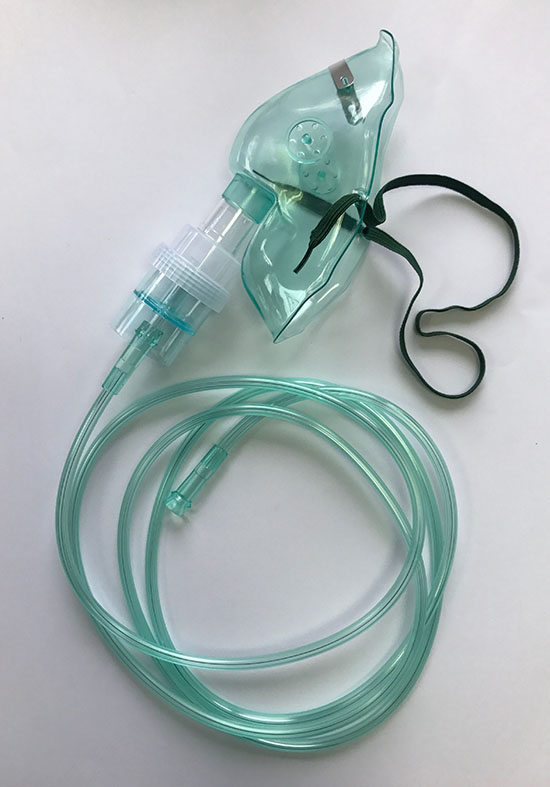Description
Oxygen Mask
A simple oxygen mask is made to effectively deliver oxygen therapy for respiratory care. It delivers variable oxygen concentration between 35–55% at flow rate of 5–10 L/min.
The oxygen mask fits over the mouth and nose of the patient and consists of exhalation ports (holes on the side of the mask) through which the patient exhales CO2 (carbon dioxide). It is held in place by an elastic around the back of the head, and it has a metal piece to shape over the nose to allow for a better mask fit for the patient.
• HS code: 9019200090
• Material: non-toxic medical grade PVC
• Oxygen mask kit consists of mask and tube.
• Size: adult elongated, adult, pediatric elongated, pediatric
• Color: green, transparent
• Packing: sterile, individual PE pack, 50 pcs/carton
• MOQ: 2000 pcs
Best China Oxygen Mask Suppliers and Manufacturers
We are a high-tech company supplying China oxygen mask. We integrate designing, R&D, manufacturing, and marketing. The main applications of products are in mechanical ventilation, respiratory therapy, and live monitoring. The main items are breathing filters, portable atomizers, heated wire circuits, and closed-suction catheters.
We are one of the top producers of medical equipment, including oxygen masks. Worldwide, medical experts employ our oxygen masks, which come in a variety of styles. However, these masks are constructed with high-quality components and created with patients' comfort and safety in mind.
Product details
Our famous China oxygen mask is used to give oxygen to someone who is having trouble breathing. Hence, it can treat several illnesses like asthma, pneumonia, heart failure, and respiratory distress syndrome. We have high demand in hospitals, clinics, and emergency settings. To give patients extra oxygen during procedures and in intensive care units, employ our best China oxygen masks.
The non-rebreathe mask is one of the most often used types of oxygen masks. The patient can breathe in pure oxygen while exhaling carbon dioxide thanks to the one-way valve on this mask. Additionally, it features a reservoir bag that stores oxygen, guaranteeing that the patient always has access to it.
In addition to these two varieties of masks, we also manufacture high-quality China oxygen mask for intensive care facilities. Patients who are in serious respiratory distress receive a high flow of oxygen from these masks. Since they can supply oxygen at a rate of up to 60 liters per minute, they are perfect for individuals who are experiencing acute respiratory failure.
Why choose us?
You can rely upon us as medical personnel all across the world to utilize our leading China oxygen masks. Therefore, we are a top manufacturer of high-quality oxygen masks. These masks come in a variety of sizes and types to accommodate the various needs of different patients. We create them to offer patients the best level of comfort and safety.
F.A.Q
Frequently Asked Questions
Every time we fly, we hear flight attendants sharing some variation of the oxygen mask rule: “Should the cabin lose pressure, oxygen masks will drop from the overhead area. Please place the mask over your own mouth and nose before assisting others.”
When you are flying you are at a much higher altitude than normal. The air is thinner, which means there is less oxygen. On board every plane is a sophisticated pressure system that ensures everyone can breathe normally, but if something happens where there is a sudden loss in pressure, the effect could be dangerous.
So, in order to keep everyone maintained with enough oxygen, the masks fall down and provide a personal flow.
However, the aircraft only has enough oxygen to provide a flow for “several minutes,” which is a lot shorter time than most believed. The masks are only meant to keep passengers supplied with oxygen until a pilot is able to bring the aircraft down.
Up in the cockpit pilots get their own oxygen masks. Once they’re outfitted, they maneuver the plane to less than 10,000 feet in altitude, where passengers will be able to breathe more easily.
Airplanes don’t carry oxygen tanks above every single seat—that would be far too heavy. Instead, the panel above each seat includes a mixture of all sorts of chemicals that, when burned, create oxygen. (Some passengers report smelling burning when the oxygen masks fall. Don’t worry: It’s not the plane, it’s the creation of oxygen.)
Generally nasal cannulas are the preferred intake method of oxygen to the body. Their slimline shape allows you to move about and perform normal duties with little hindrance.
A nasal cannula allows the delivery of oxygen concentrations of between 24 to 40% at flow rates between 1 to 6 L/min – making them suitable for use with most portable oxygen concentrator units.
An oxygen mask can be used if you find cannulas uncomfortable but will be better suited to a stationary situation such as sitting or in bed.
A simple oxygen mask fits over the nose and mouth with open side ports to allow air to enter and dilute the oxygen as well as allow the escape of carbon dioxide.
An oxygen mask allows oxygen delivery via either the nose or mouth so is suitable for nose and or mouth breathers.
Apart from the physical differences of each device, the primary difference is that oxygen masks allow higher concentrations and rates of flow of oxygen. A simple oxygen mask can deliver oxygen concentrations from 35 to 55% at flow rates between 5 to 10 L/min.



